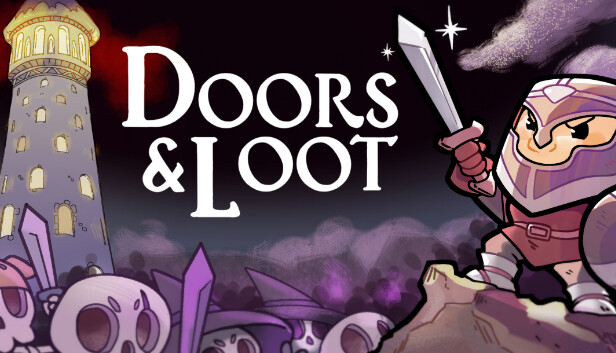- DEVELOPER: Scalions Studios
- PUBLISHER: Scalions Studios
- PLATFORMS: PC
- GENRE: Dungeon-crawler / Rougelike
- RELEASE DATE: May 13, 2024
- STARTING PRICE: 8,79 €
- REVIEWED VERSION: PC
Doors & Loot is a dungeon-crawler game with roguelike elements. In this game, you’ll explore various dungeons, collect loot, battle diverse enemies, and upgrade your skills. Your ultimate objective is to reach the top of the tower and uncover the mysteries hidden within.
Unlike traditional roguelikes where death sends you back to a rest place to improve your skills, this game offers a unique twist. After clearing a floor, you’re presented with a special chest containing a reward that ends your run. You must decide whether to take the reward and return or risk advancing to the next floor for potentially greater loot, facing tougher enemies along the way.
The game features simple mechanics, making it easy to pick up without a steep learning curve. To play, you primarily use the left and right mouse buttons along with healing and mana potions. What I really like about this game is the ability to dodge enemies by moving around them, which is especially useful against long-range attackers.
However, one downside is the constant clicking required to attack enemies. Instead of pressing a single button to target the nearest enemy, you have to click on each enemy individually. While the developers intended for this system to help you aim at specific targets, it becomes tedious when facing multiple enemies close together, as you’ll end up clicking on many of them instead of focusing on just one.
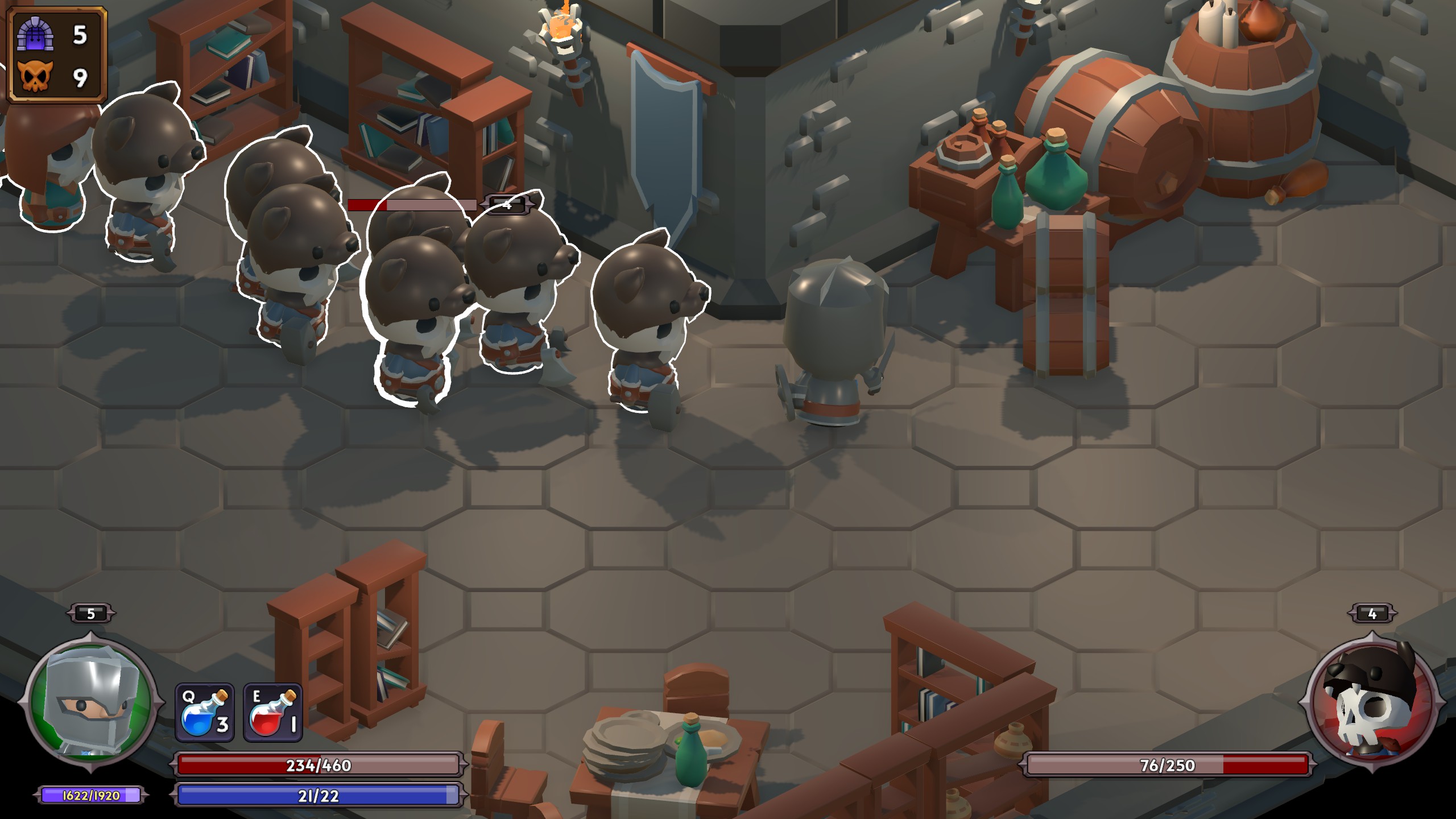
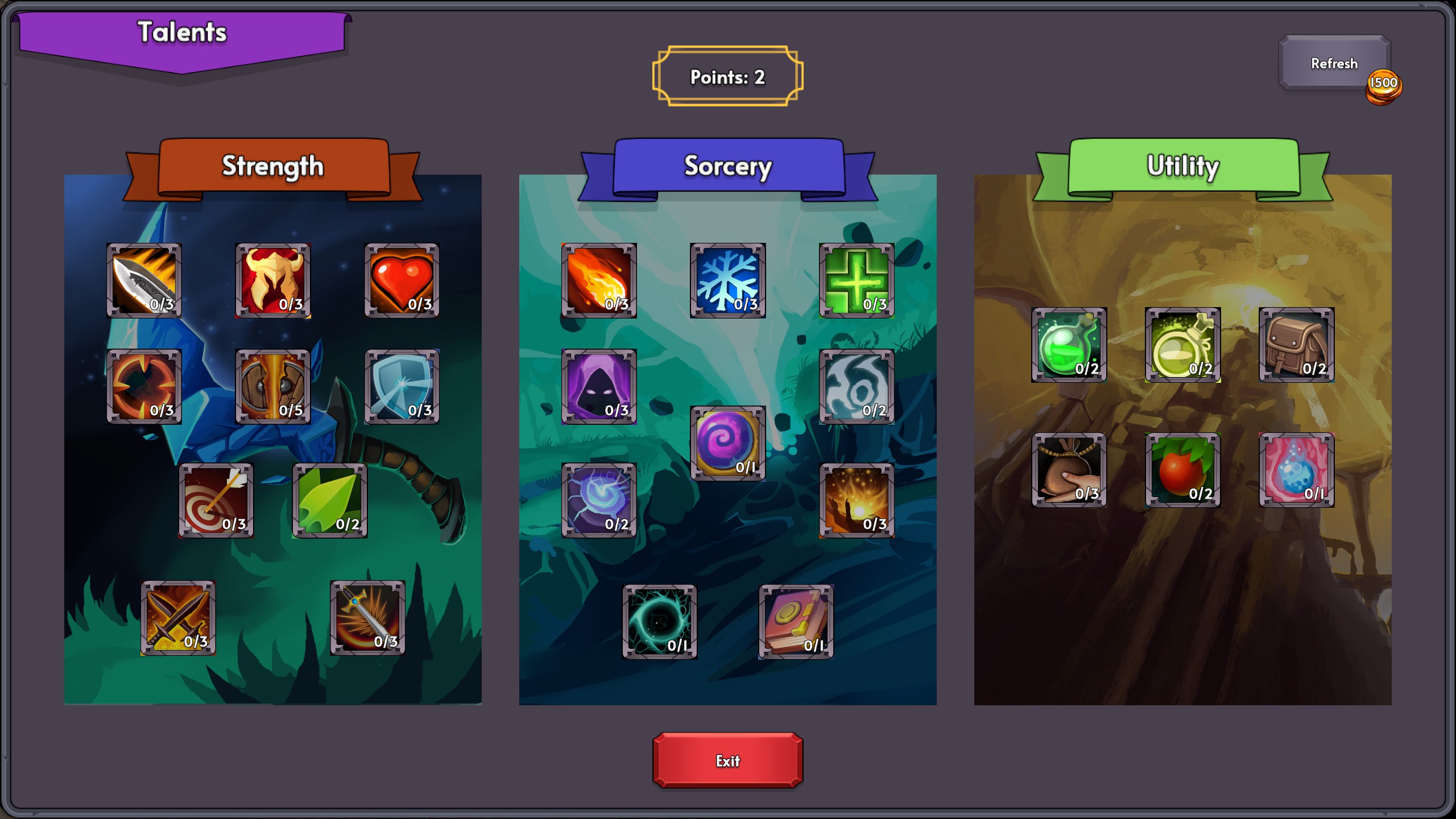
Balanced yet challenging gameplay
Key features include a 50-story tower, over 30 different dungeon models, 10 types of monsters, and 4 challenging bosses. You can also discover books with the world’s history, new journals, and character conversations, adding some depth to the game. However, these text elements aren’t particularly special and often lack the intrigue to keep you reading through all of it.
Regarding dungeon models, the maps are procedurally generated from 30 pre-designed models. Unfortunately, this leads to repetition, as you’ll encounter the same layouts multiple times during a playthrough. I find the system somewhat confusing; I spend more time navigating simple corridors than discovering new models to explore.
After completing a run, you’ll always have some weapons, armor, potions, and arrows in your inventory for various uses. First, you can upgrade your skills through three skill trees: one focused on magic, another on attack, and a third on general enhancements like increased inventory space or better healing. Although you level up at a reasonable pace, it still takes time to unlock all the skills. Despite the decent amount of content, it might not keep you engaged until the end. Personally, I lost interest after defeating the third boss.
Additionally, you can enhance, purchase, or sell your equipment (finding scrolls is important). Each run provides resources for crafting and selling equipment to earn money. While money was never an issue, there’s one underlying aspect affecting the overall game experience. What really stood out to me is the weapon level system. However, I’m still unsure how it works. A level 1 weapon can be stronger than a level 6 one, depending on the modifiers.
Fortunately, it’s easy to compare weapons: hovering your mouse over an item displays the pluses and bonuses of both the current and potential replacement. I often found myself changing weapons frequently but remained puzzled by the equipment level system’s inconsistency. Additionally, the rarity of items didn’t seem to significantly affect weapon performance.
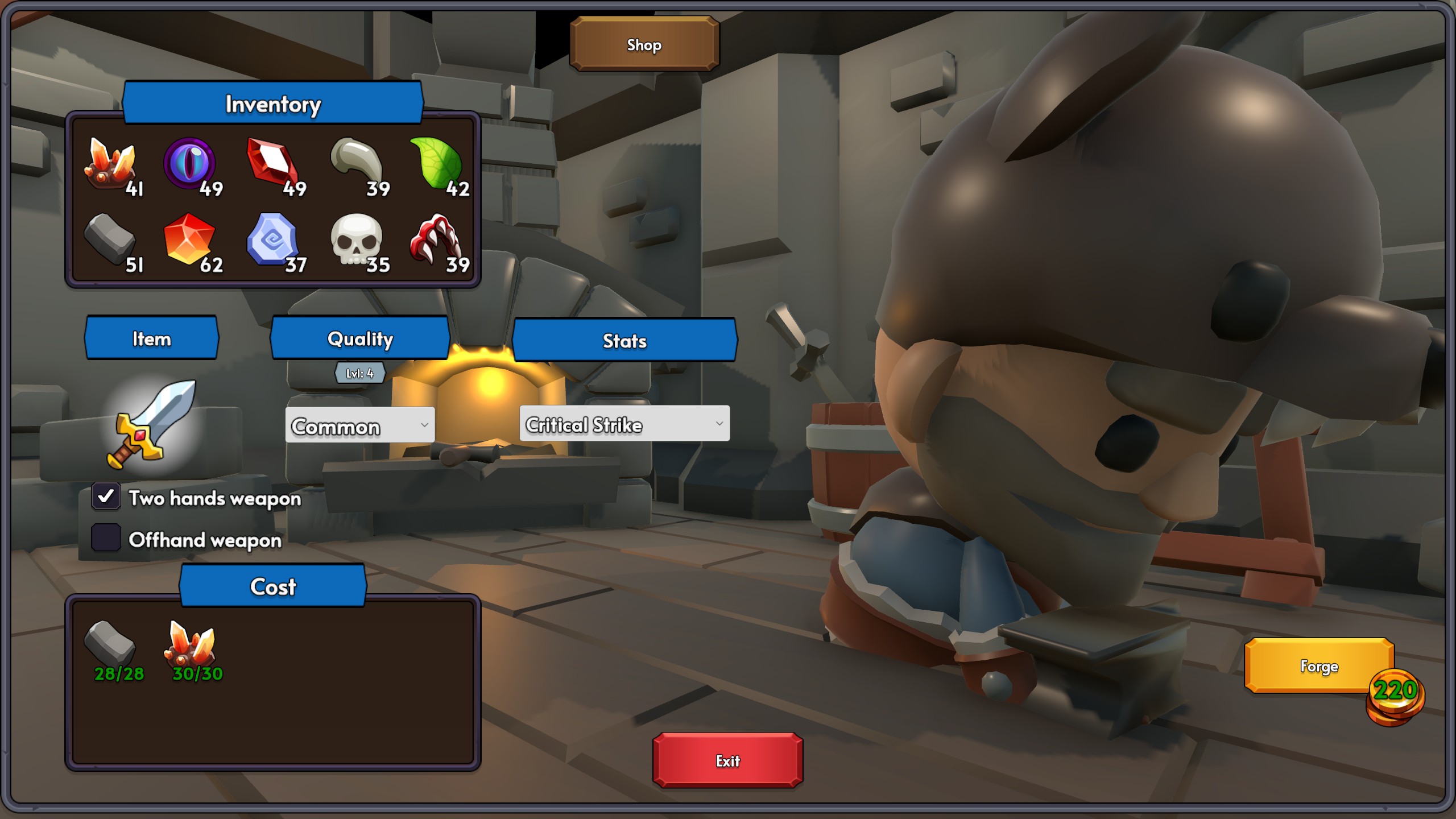
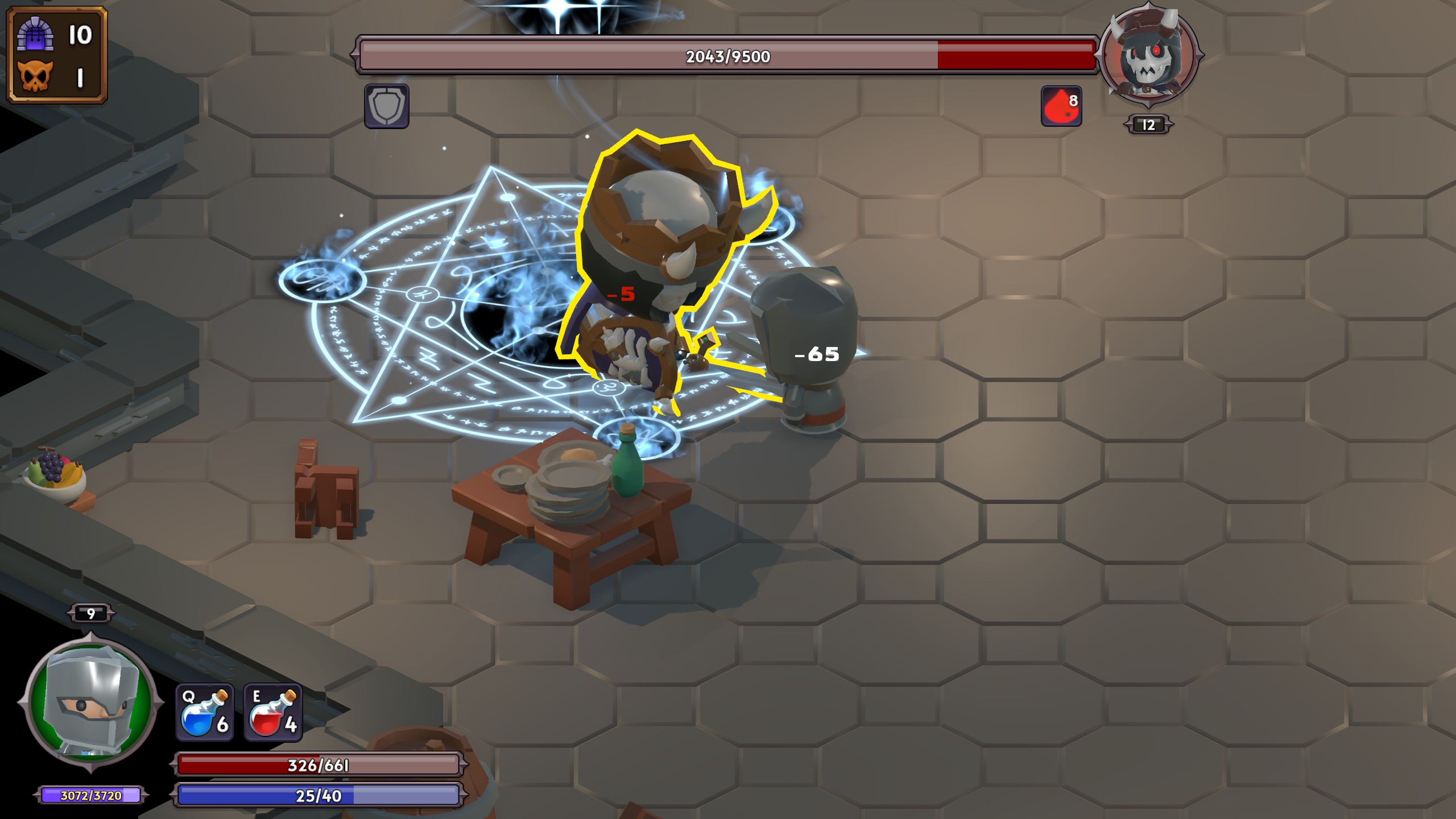
Ending thoughts
Nevertheless, using bows, swords, axes, hammers, and spell books was fun, as each offered a unique gameplay experience. Remember to buy a limited amount of arrows, mana potions, and health potions. To be honest, it’s much better to focus on critical attacks or equipment that increases your crit chance. By pressing space, you can perform a powerful critical attack when the “percentage” icon appears at the right moment. Most other weapons are quite limited. You can’t carry many arrows, mana depletes quickly, so it’s best to keep them in your inventory for strategic use. Unfortunately, magic doesn’t deal enough damage to be effective.
Bosses are quite challenging, with a large amount of HP and special attacks that you can strategically use to your advantage. Defeating them requires time and smart play. Additionally, loot chances are favorable—the higher the floor you reach, the better the rewards from the chests. The game conveniently displays the percentage chance for each equipment rarity, so you don’t have to guess your odds.
In conclusion, the graphics may not stand out—some may find them dull, while others may find them simple yet engaging. The real focus here is on gameplay. For an indie game, the gameplay loop is well-balanced and thoughtfully designed, with a variety of loot and enemies keeping things interesting. So, is this game worth it? If you’re looking for a side game to play when you’re bored, something simple and not too time-consuming, then Doors & Loot is a perfect choice for you.
Review copy provided by the publisher
3.5


